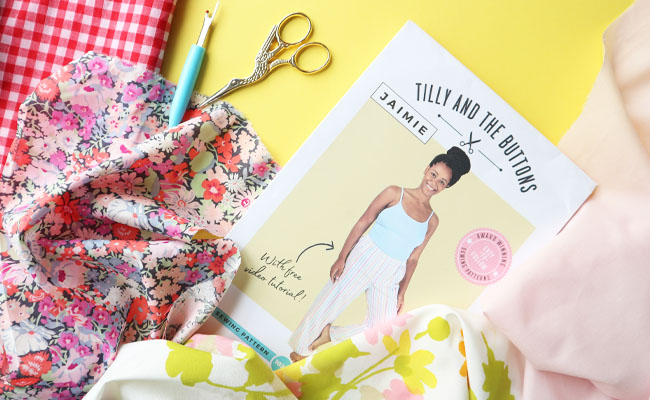
Cotton is a popular fabric choice among sewists and crafters, and for good reason! With its breathability and wide availability in a huge range of prints and styles, it's no surprise that cotton has had a bit of a renaissance in recent years.
In particular, finer cottons like lawn, voile, Swiss dot and seersucker have become increasingly popular. They are relatively easy to cut, sew and press, yet lightweight, so provide a lovely balance of structure and drape.
Cotton is one of the easiest fabrics to work with, but still has its quirks. But with the following tips, you'll be well on your way to sewing some gorgeous cotton clothes…


Tips for sewing with fine cotton fabric
1. Pick the right project, bearing in mind that cottons can hold their shape but don’t have too much structure. These fabrics are a great choice for sewing patterns such as the Marnie blouse with its tucks and ruffles, the Mabel dress and blouse with its shirring and puffed sleeves, the Lyra shirt dress to create a neat collar and pretty tiers, and our beginner-friendly Jaimie pyjama bottoms for breathable nightwear.
2. Use a brand new 70/10 needle in your sewing machine. This will help avoid holes, snags, and puckers which fine cotton can be prone to.
3. Use fine pins to avoid leaving holes in the fabric (we love Merchant and Mills’ entomology pins). If you don’t have fine pins to hand, as much as you can, try to pin within the seam allowance so any holes end up hidden on the inside of the garment.

5. One of the great things about cottons is how well they press. Use this to your advantage – for example, if you need to mark a notch or a particular point on the fabric, try simply finger pressing. Yep, just fold and press together with your fingers to leave a light mark that you can iron out later.
6. If your fabric is particularly fine, try shortening the stitch length to around 2.2mm.
7. If your machine has a knob for adjusting the presser foot pressure, turn it up to the highest setting to grip those fine layers together as you sew.

8. To avoid the fabric getting pushed under the needle plate at the start of a seam, hold onto the loose threads at the start of the seam, and gently pull them away from you for the first few stitches.
9. If the material you’re working with is on the transparent side, you might want to finish the seam allowances with French seams to create a neater finish. Watch our video on how to sew narrow French seams.
10. Some finer cottons have a tendency to fray a fair bit, so keep a pair of small, sharp snips close to hand to trim off loose fibres as you go.

